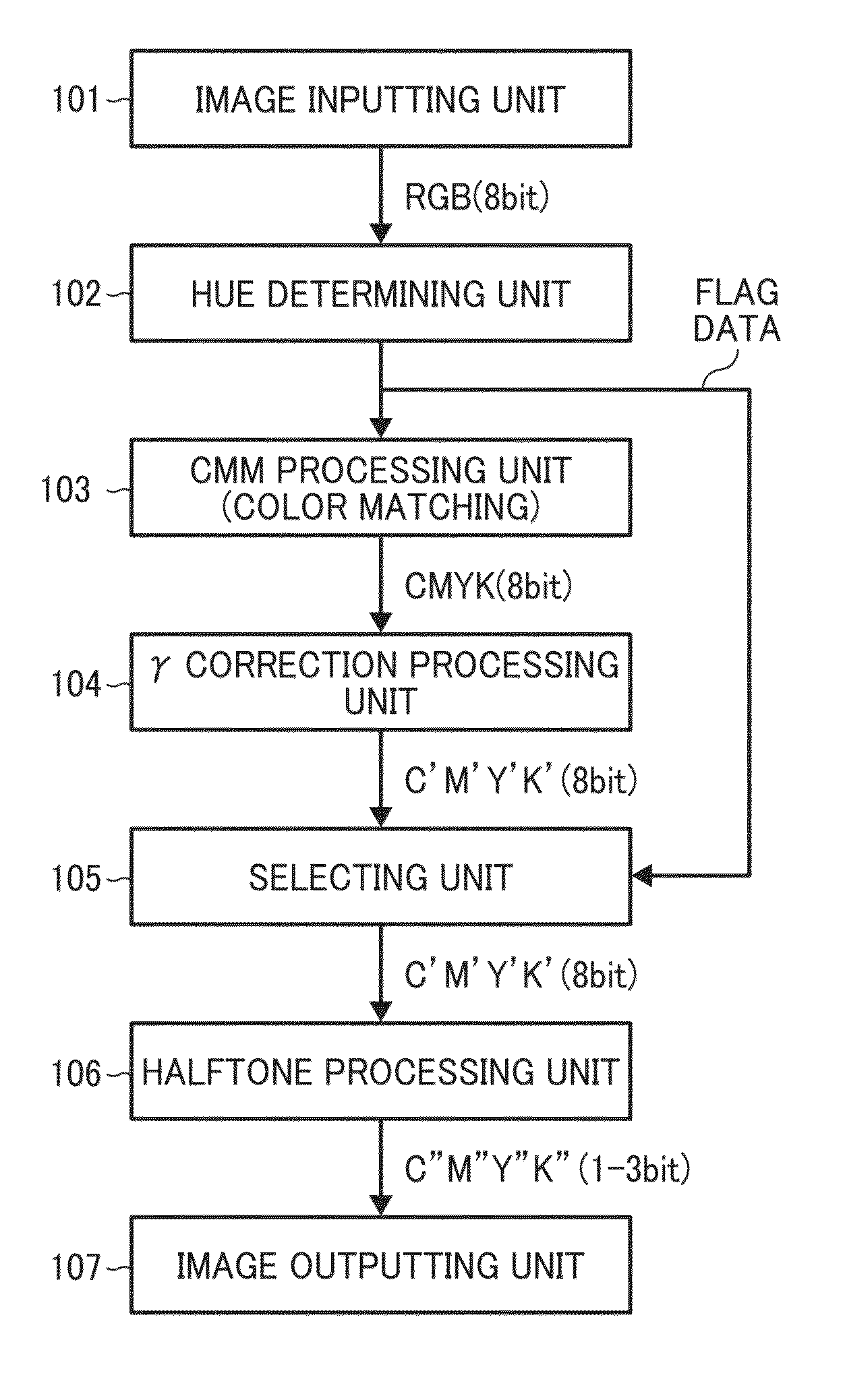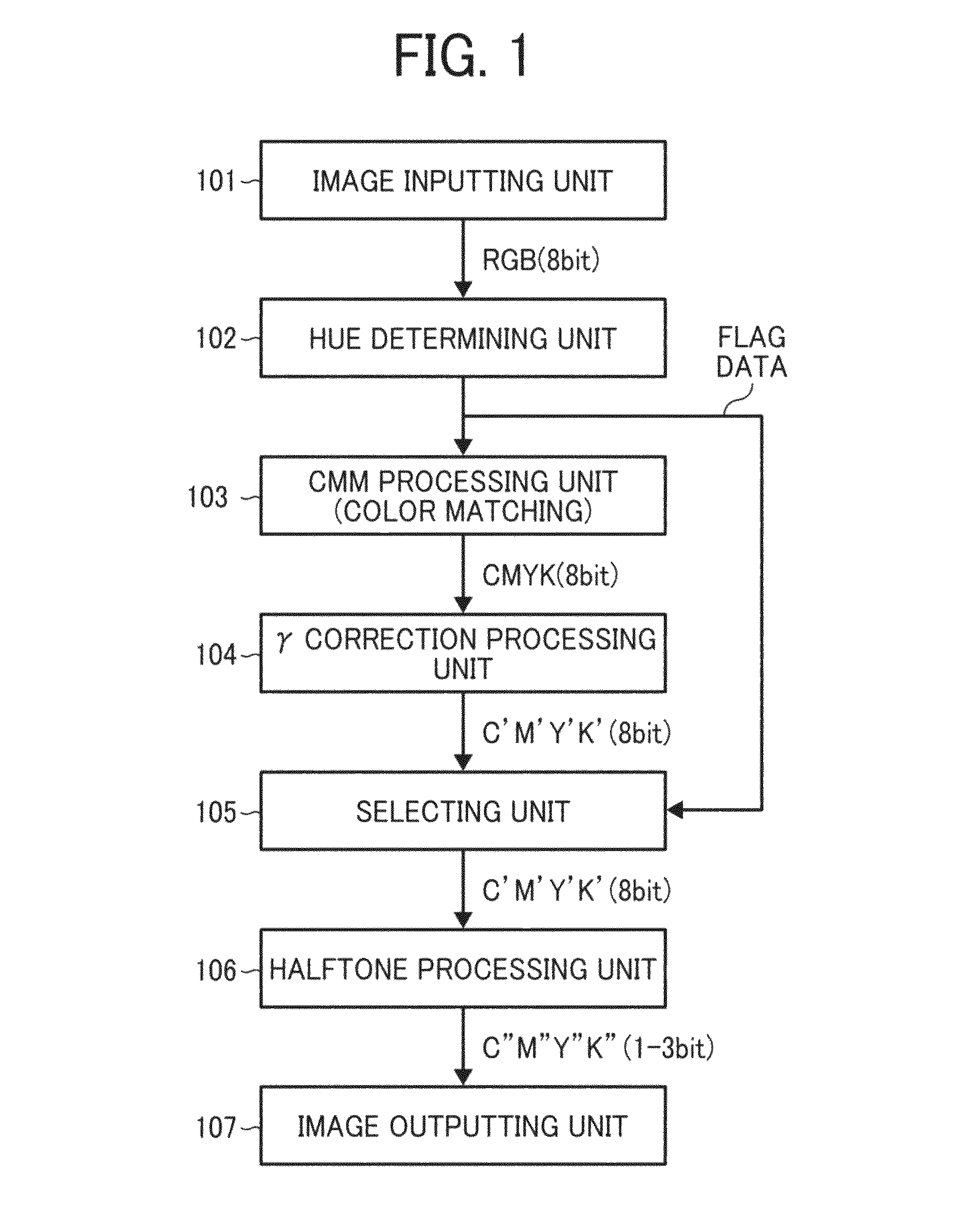Image processing system, method, program, and storage medium to implement universal color design
a color design and image processing technology, applied in the field of image processing systems, can solve the problems of not always true that people with no disabilities can have a sense of satisfaction, the number of colors that can be used to achieve that effect is severely limited, and it is difficult to convert an image that uses many colors, so as to facilitate color universal design and less discomfor
- Summary
- Abstract
- Description
- Claims
- Application Information
AI Technical Summary
Benefits of technology
Problems solved by technology
Method used
Image
Examples
first embodiment
[0022]An embodiment of the present invention will be described in detail below with reference to the drawings.
[0023]Human beings recognize colors based on impulses from L cones that respond to stimuli of the color red (R), M cones that respond to green (G), and S cones that respond to blue (B). People with color amblyopia are not good at recognizing colors compared to people with no disabilities since their cones are not well-balanced or are malfunctioning. That is, whether or not people with color amblyopia can recognize colors depends on whether the input color belongs to the red, green, or blue color system.
[0024]FIG. 1 is a block diagram illustrating a configuration of an image processing system as an embodiment of the present invention. In FIG. 1, an image inputting unit 101 acquires images from apparatuses such as personal computers (PCs) and multifunctional peripherals (MFPs). A hue determining unit 102 determines hue of the input image data. A color matching method (CMM) pro...
second embodiment
[0036]In the first embodiment, AM dithering is used as halftone processing. However, the present invention is not limited thereto, and FM dithering or error diffusion processing can also be used as halftone processing. In that case, the resolutions of dithering and error diffusion is switched in response to the determined hue area the same as in the first embodiment.
[0037]Also, in the second embodiment, dithering or error diffusion is applied to input image data. Alternatively, different halftone processing can be applied to the same image data. That is, processing results of FM dithering and error diffusion become almost the same, so execution of both processes can be allowed. By contrast, since processing types of AM dithering and FM dithering, and AM dithering and error diffusion processing are different, execution of those processes cannot be allowed. This is to prevent continuity of gradation in gradation pattern from looking disturbed and unintentional three-dimensional effect...
third embodiment
[0038]In the present invention, since color difference is expressed by changing the LPI or resolution of halftone processing, continuity of gradation in gradation pattern looks disturbed and an unintentional three-dimensional effect is generated if screen angle and halftone dot pattern is different as described above. In that case, people with color amblyopia cannot recognize the color difference.
[0039]To cope with that issue, in a third embodiment, the screen angle is set to the same value and the halftone dot pattern is set to the same tendency in each hue area. FIG. 4 (a) illustrates an example of different screen angles (line screen dithering process), and FIG. 4 (b) illustrates an example of different halftone dot patterns. In this third embodiment, if dithering process of, e.g., 45 degrees, as screen angle is used, a screen angle of 135 degrees is not used.
[0040]It should be noted that this does not mean that screen angles are common for each CMYK region as output color. For e...
PUM
 Login to View More
Login to View More Abstract
Description
Claims
Application Information
 Login to View More
Login to View More - R&D
- Intellectual Property
- Life Sciences
- Materials
- Tech Scout
- Unparalleled Data Quality
- Higher Quality Content
- 60% Fewer Hallucinations
Browse by: Latest US Patents, China's latest patents, Technical Efficacy Thesaurus, Application Domain, Technology Topic, Popular Technical Reports.
© 2025 PatSnap. All rights reserved.Legal|Privacy policy|Modern Slavery Act Transparency Statement|Sitemap|About US| Contact US: help@patsnap.com



